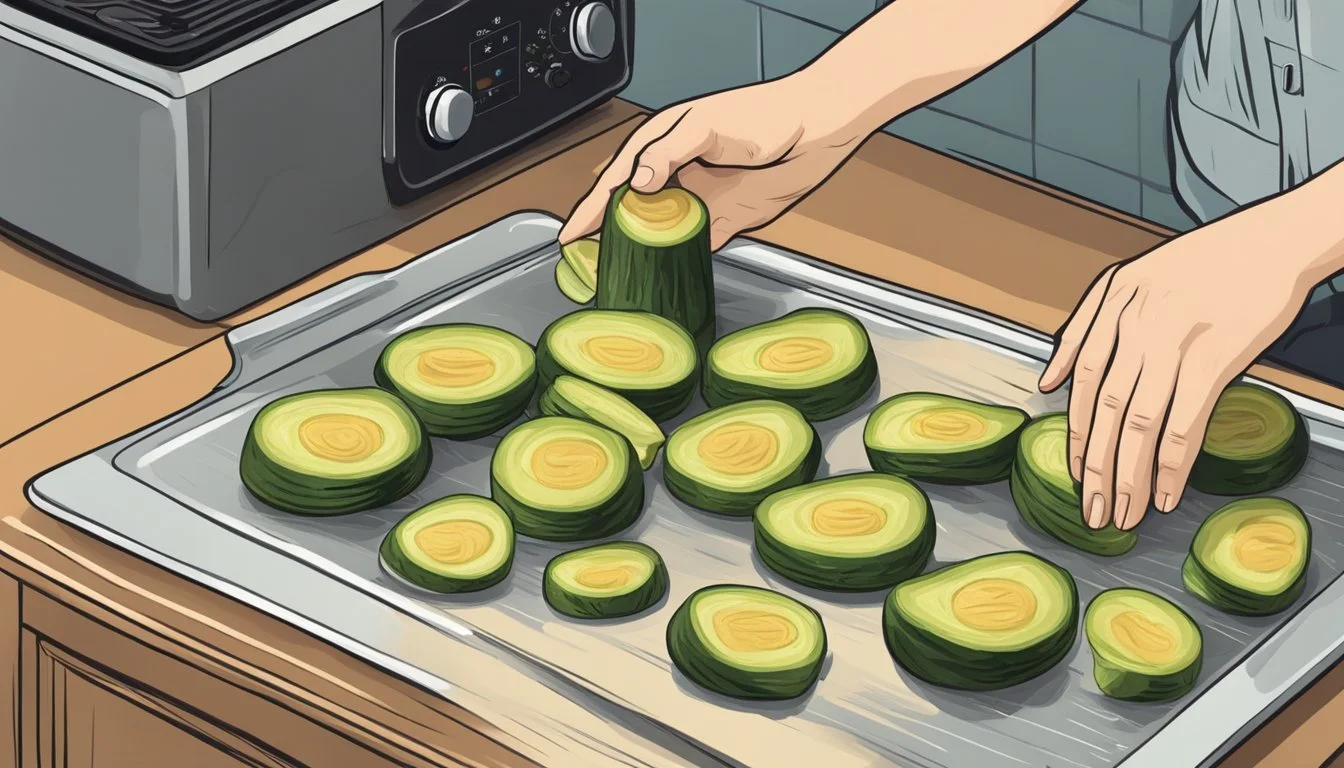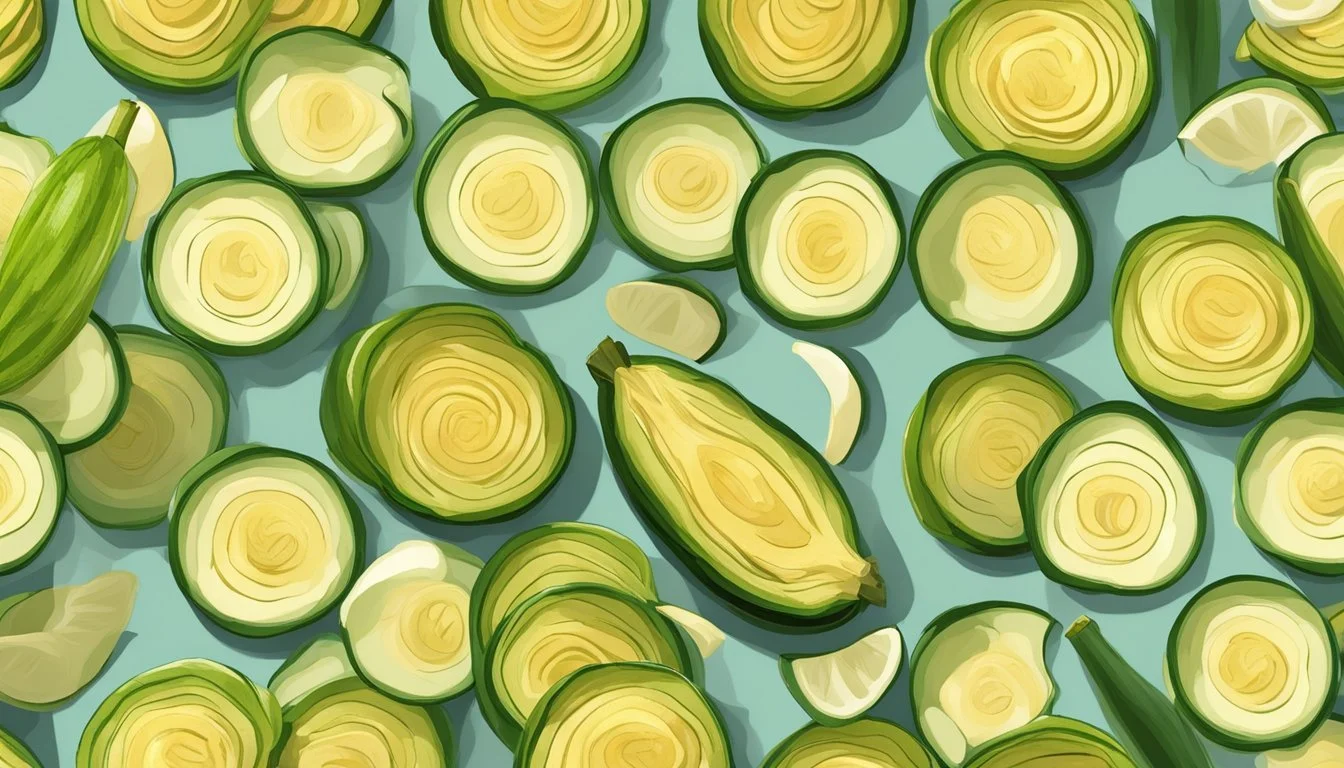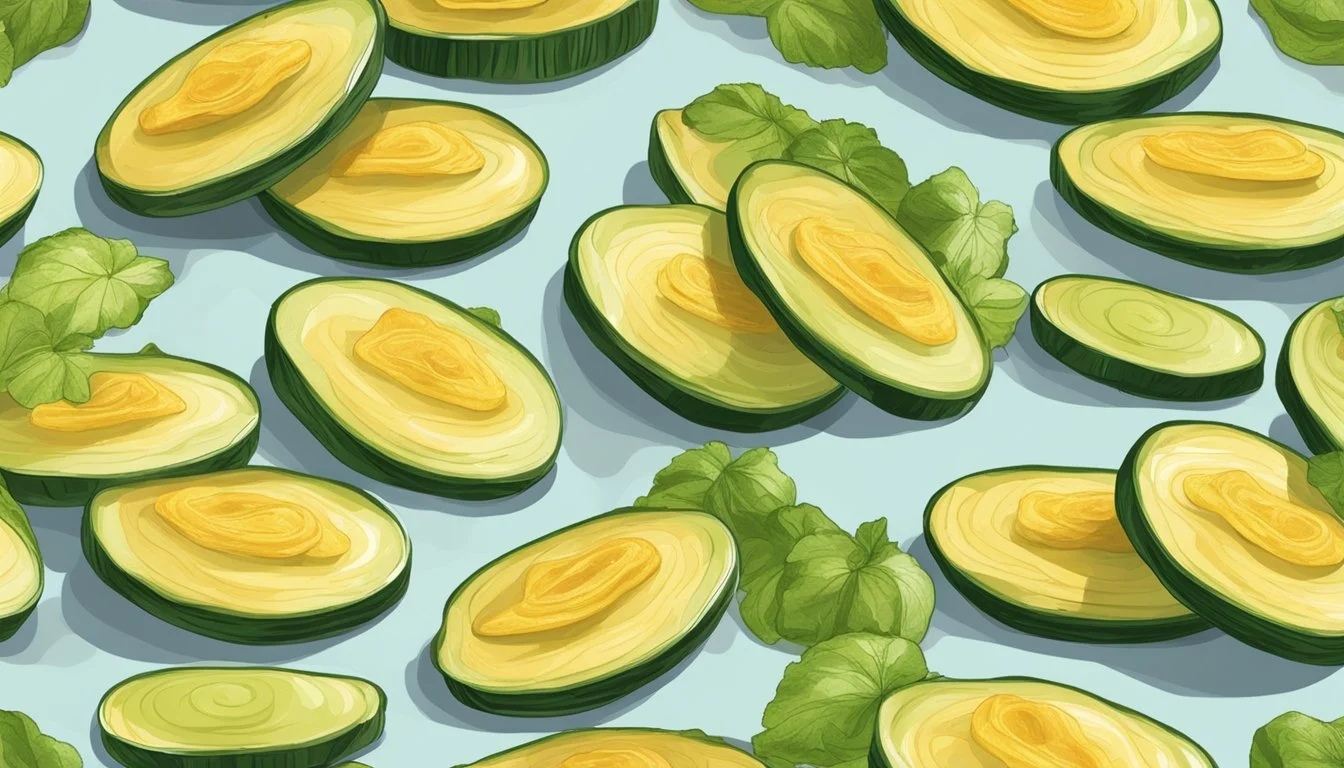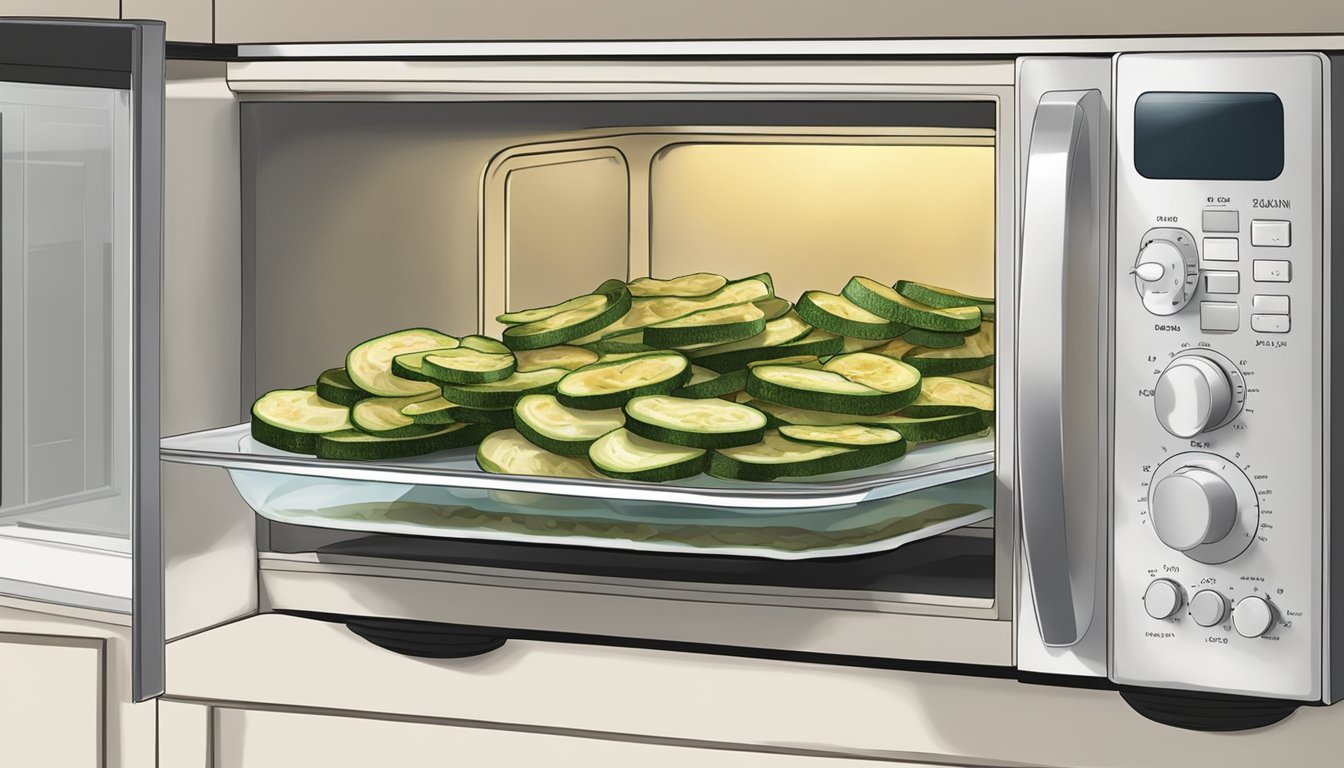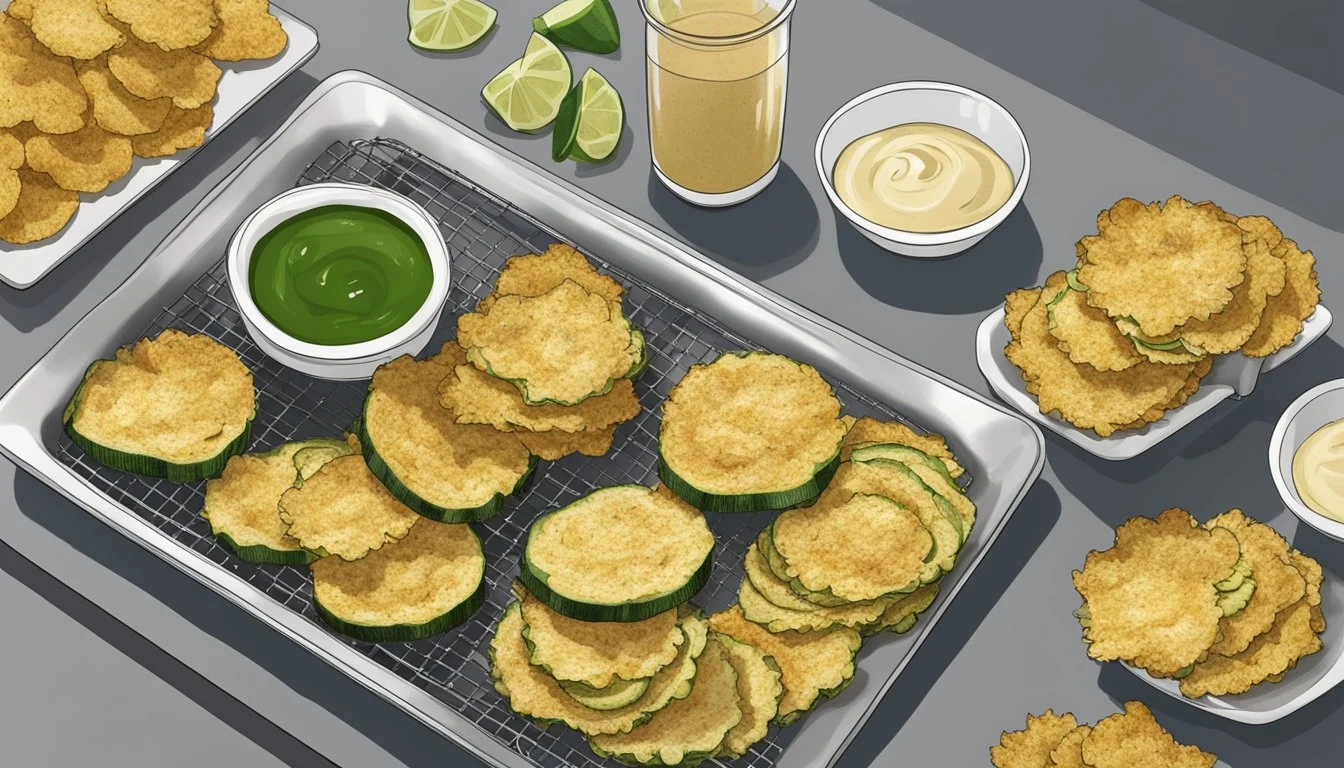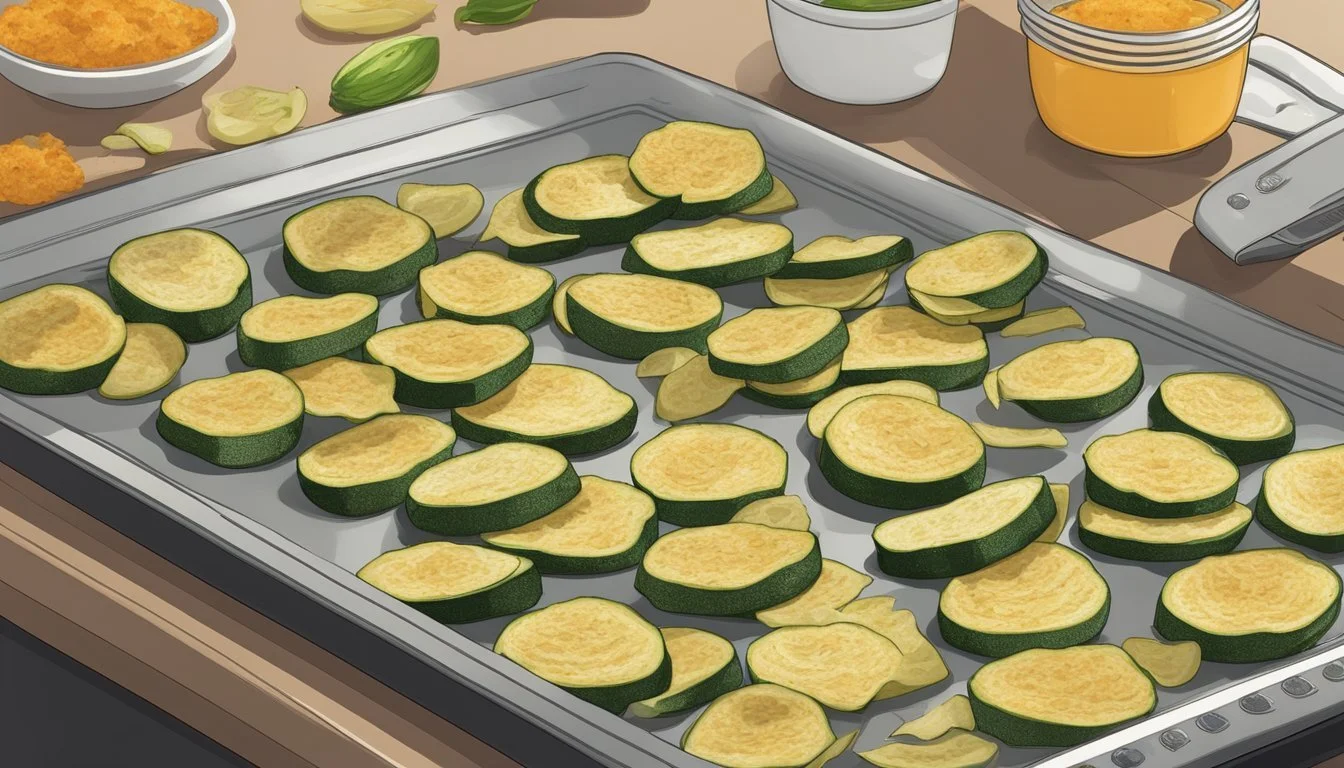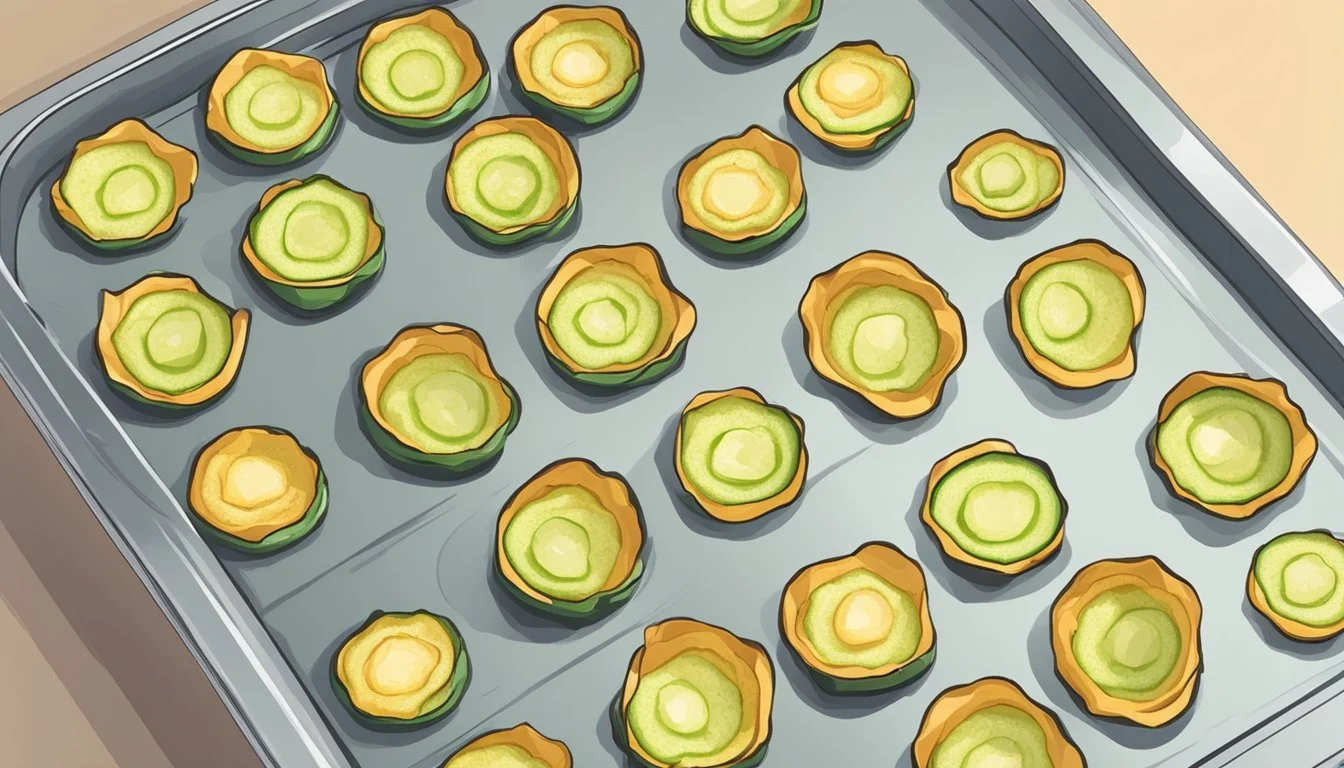Best Way to Reheat Baked Zucchini Chips
Ensuring Lasting Crunchiness
Baked zucchini chips are a delicious and healthier alternative to traditional potato chips, offering a satisfying crunch and a boost of nutrients. However, one of the challenges with these veggie snacks is maintaining their crispiness, especially once they've cooled down or been stored away. Reheating them while preserving their texture is a matter of applying the right technique.
To keep the crunch in zucchini chips, it's crucial to remove as much moisture as possible both during the initial baking process and upon reheating. The best method to reheat these chips involves using an oven, as it provides even heating and the ability to remove moisture, which is essential for keeping the chips crunchy. Microwaves, conversely, tend to soften the chips due to the steam they generate, which is less than ideal for this purpose.
Employing the correct oven temperature and avoiding overcrowding on the baking sheet are key factors in the reheating process. The oven should be preheated to a high temperature to ensure a quick and effective reheating that crisps the chips up without cooking them further. A single layer on the baking sheet without overlap allows hot air to circulate freely around the chips, ensuring they heat evenly and regain their desirable texture.
Selecting the Right Zucchini
When looking for zucchini to bake into chips, one should prioritize freshness and size to ensure a healthy and flavorful vegetable. Proper preparation technique lays the foundation for a crunchy end result.
Choosing Fresh Zucchini
Size: A medium-sized zucchini, approximately 6-8 inches long and 2 inches in diameter, is ideal. This size typically indicates a tender texture with minimal seeds.
Skin: Look for zucchini with a glossy, unblemished skin, which suggests freshness and good quality.
Firmness: It should be firm to the touch. Soft spots might indicate a lack of freshness, which can affect taste and texture.
Prepping Zucchini for Baking
Washing: Rinse under cool running water to remove any dirt before slicing.
Slicing: Use a sharp knife to cut even, 1/4-inch thick rounds. Uniform slices ensure even baking and crispiness.
Draining: Lay out slices on a clean kitchen towel or paper towels, pat them dry, or let them sit for a few minutes to release extra moisture, which helps avoid sogginess after baking.
Essential Ingredients
When reheating baked zucchini chips to retain their crunchiness, the quality of the ingredients used can significantly impact the end result. Precise ingredient selection enriches flavor and ensures a delightful texture.
Choosing Quality Olive Oil
Selecting a high-quality olive oil is crucial for maintaining the chips' crispness and adding a subtle richness. Look for labels indicating "extra virgin" as this denotes oil from the first pressing of olives, preserving authentic flavor and antioxidants. Olive oil works best at low to medium heat, which suits the gentle reheating process.
Olive Oil: Extra virgin olive oil recommended
Purpose: Enhances crispiness and adds flavor
Optimal Seasonings for Flavor
A well-balanced blend of seasonings elevates zucchini chips from ordinary to exceptional. Use kosher salt due to its pure flavor and ease of control when seasoning. Incorporate a touch of black pepper for a slight heat and garlic powder for savory depth. For an umami boost, Parmesan cheese can be sparingly sprinkled. To broaden the flavor profile, incorporate paprika for smokiness, while herbs like basil and dill can add fresh, aromatic notes.
Core Seasoning Components:
Kosher Salt: Enhances natural flavors; less processed
Black Pepper: Provides subtle heat
Garlic Powder: Offers a savory nuance
Parmesan: Adds a nutty, cheesy umami quality
Additional Seasoning Options:
Paprika: Infuses a smokey essence
Basil and Dill: Contribute fresh, herbaceous layers
Baking Techniques
When reheating baked zucchini chips, precise temperature control and the use of proper surfaces are critical to maintain crunchiness.
Oven Temperature and Timing
For the best results, one should preheat the oven to a moderate temperature, typically around 350°F (175°C). This will ensure the chips warm evenly without burning. They should heat for about 5 to 10 minutes. The key is to monitor them closely, as oven times may vary and thinner slices require less time than thicker ones.
Using Baking Sheets and Parchment
A baking sheet lined with parchment paper is the ideal combination for reheating baked zucchini chips. The parchment paper prevents sticking and ensures easy removal of the chips without damaging their structure. One should spread the zucchini chips in a single layer, without overlap, to guarantee uniform heating.
Reheating for Optimal Crunch
Reheating baked zucchini chips requires a careful balance to maintain their crispness and golden texture. The oven is typically the best option for achieving this, but other methods can also work with attention to detail.
Reheating in the Oven
To ensure zucchini chips regain their satisfying crunch, one should preheat the oven to 400 degrees F. It is recommended to
Spread the zucchini chips in a single layer on a baking sheet.
Optionally, place them on a rack within the baking sheet to allow air to circulate and prevent sogginess.
The chips should be heated for 7 to 10 minutes. This method helps the chips to dry out any moisture absorbed during storage and restores their crispness.
Alternative Reheating Methods
For those seeking a different approach or lacking an oven, an air fryer can serve as an alternative. To use an air fryer:
Preheat it to 350 degrees F.
Place the chips in the basket, ensuring they are not overlapping.
Reheat the chips for about 3 to 4 minutes. An air fryer circulates hot air around the zucchini chips, which helps to maintain their crunchy texture.
Storing Baked Zucchini Chips
Proper storage is crucial for maintaining the crunch of baked zucchini chips. They should be kept in conditions that prevent moisture from softening them. Implementing the right techniques will help ensure the chips stay fresh and crispy until their next serving.
Airtight Containers
To keep baked zucchini chips crisp, one should store them in airtight containers immediately after they have cooled. The container must seal properly to protect the chips from outside air and humidity, which can quickly lead to a loss of crispness. For additional tips:
Choose containers that have secure closures, such as snap lids or screw tops.
Check the seal of the container regularly to make sure it has not been compromised.
Preventing Moisture Buildup
Moisture is the enemy of crunchiness. To combat this, one can take extra steps when storing zucchini chips:
Line the airtight container with paper towels. These will absorb any excess moisture that may form, particularly if the chips were not completely cooled before storage.
Change the paper towels regularly to ensure they remain dry and effective.
It is advisable to avoid storing the chips in areas of high humidity, such as near a dishwasher or stove, or in a refrigerator where moisture levels are naturally higher.
Healthy Eating Insights
Reheating baked zucchini chips can be a challenge, but understanding their nutritional value and strategic placement in a balanced diet can ensure that this healthy snack remains beneficial to one's health goals.
Nutritional Benefits of Zucchini Chips
Zucchini chips are a low-calorie, low-carb alternative to traditional snack options. One cup of zucchini contains approximately 20 calories, which makes it a diet-friendly choice, particularly for those following a keto or paleo-friendly eating plan. Furthermore, zucchini is a good source of dietary fiber, vital for digestive health, and contains protein, which is essential for muscle repair and growth. Unlike many snacks, zucchini chips are naturally low in sugar and saturated fat, enhancing their appeal as a healthy snack option.
Nutrition Information Amount Calories Low Carbohydrates Low Sugar Minimal Fiber Good Source Protein Moderate Sodium Low Saturated Fat Low
Zucchini also provides a moderate amount of potassium and is rich in antioxidants, which contributes to overall health and helps combat inflammation.
Incorporating into a Balanced Diet
Incorporating zucchini chips into a balanced diet is straightforward due to their versatility and nutrition profile. They can serve as an excellent snack option between meals or as a side dish that complements a variety of main courses. Zucchini chips can be part of a low-carb, keto, or paleo diet, providing a satisfying crunch without the high carbohydrates found in potato chips or crackers. To maximize benefits, they should be consumed in moderation and paired with sources of healthy fats and protein, such as a hummus dip made with olive oil or a sprinkle of nutritional yeast for added flavor and nutrients.
One must also pay attention to the addition of seasonings and toppings, as these can sometimes add unintended sodium or fats. It is advantageous for an individual aiming to maintain a healthy lifestyle to season their zucchini chips with natural herbs and spices, and to be mindful of the overall daily intake of calories, sugar, and saturated fats.
Serving and Pairing Suggestions
Once you have mastered the perfect reheat of baked zucchini chips, serving them in enticing ways and pairing them with the right dips can turn a simple snack into a memorable appetizer or side dish.
Creative Serving Ideas
Baked zucchini chips are a delectable and healthier alternative to traditional potato chips and can be presented creatively to enhance their appeal. Serving them in a cone made of stiff paper or a clean plantain leaf can add a rustic touch to the snack. For a more elegant presentation, stacking them on a slate board with a sprig of rosemary or thyme introduces an aromatic dimension. These chips also pair well with sandwiches, burgers, and wraps, offering a crunchy, guilt-free accompaniment.
Complementary Dips and Sauces
The right sauce can elevate zucchini chips from a simple snack to a culinary experience. Consider these pairing options:
Herbaceous Dips: A yogurt-based dip with dill, mint, or chives complements the light nature of zucchini.
Creamy Sauces: For those who prefer richness, a garlic aioli or a smooth cheese sauce can add depth to the chips' flavor.
Spicy Options: A dash of heat provided by a sriracha mayo or a zesty salsa can offer a refreshing kick that contrasts the chips’ crispiness.
Serving baked zucchini fries? Pair them with:
Classic: Tomato ketchup remains a timeless favorite for fries of any kind.
Bold: An adventurous eater might enjoy a bold, tangy barbecue sauce.
Whether served as an appetizer or a side, the versatile zucchini chips and fries are bound to impress both visually and on the palate when paired thoughtfully with these suggestions.
Customization and Variations
Customizing baked zucchini chips allows for a variety of flavors that can cater to different palates and dietary requirements. Experimenting with seasonings and making dietary swaps ensures that everyone can enjoy this crunchy snack.
Alternative Seasonings and Flavors
One can tailor the taste of zucchini chips by incorporating a range of seasonings and flavors. Below are some suggestions for enhancing the flavor:
Bold and Spicy: Add a pinch of chili powder or cayenne pepper for heat.
Smoky: A touch of smoked paprika can impart a warm, smoky flavor.
Herbaceous: Mix in dried herbs such as thyme, rosemary, or oregano for an aromatic twist.
Vinegar-Based ‘Salt & Vinegar’: Sprinkle with a vinegar powder for that tangy, salty kick.
When adding seasonings, one should evenly distribute them to ensure each chip is flavorful.
Dietary Modifications
For those with specific dietary preferences or restrictions, zucchini chips can be altered without sacrificing texture or taste:
Gluten-Free: Use gluten-free breadcrumbs or almond meal instead of traditional Panko or wheat-based coatings.
Vegan-Friendly: Substitute nutritional yeast for Parmesan to maintain the cheesy flavor profile.
Lower Fat Option: Opt for a light misting of avocado oil, which is heart-healthy and has a high smoke point, making it suitable for baking.
It's essential to choose the correct substitutes that align with the desired dietary needs while still providing a satisfying crunch.
Kitchen Tools and Equipment
To ensure the optimal reheating of baked zucchini chips for a crisp outcome, selecting the right kitchen tools and equipment is essential.
Recommendations for Slicers and Mandolines
Mandoline slicer: A mandoline slicer is crucial for achieving uniformly thin slices of zucchini that bake and reheat evenly. The consistency in thickness helps in avoiding soggy or burnt chips. When searching for the best mandoline, one should look for features such as adjustable thickness settings and a comfortable handguard for safety.
Adjustable Thickness: Opt for a mandoline with multiple thickness settings. Models that allow adjustments from 1/8 in (.3 cm) to 1/4 in (.6 cm) are ideal.
Safety Features: A handguard is important to protect the fingers during slicing. Some mandolines also come with non-slip feet or handles for stability.
Slicer: If a mandoline slicer is not available, a sharp chef's knife or a handheld slicer can also be used to slice the zucchini. The key is to maintain evenness in the slices for uniform cooking and reheating.
Other Helpful Utensils
Alongside a mandoline slicer or a similar tool, a few other utensils can aid in the reheating process of baked zucchini chips:
Baking Sheets: Non-stick baking sheets or pans are preferable for reheating zucchini chips. To prevent sticking and achieve a crispier texture, parchment paper or silicone baking mats can be utilized.
Materials: Aluminum baking sheets are widely recommended due to their excellent heat conduction.
Size: Large baking sheets allow for chips to be spread out in a single layer without touching, preventing steam buildup which could make them soggy.
Utensils for Turning: To ensure even reheating, it's advisable to have a spatula or a pair of tongs handy. This allows the chips to be flipped easily without breaking them.
By equipping oneself with these specific tools and following these guidelines, one can reheat zucchini chips effectively, preserving their crunch and flavor.
Exploring Similar Snack Options
When looking for crunchy snacks, zucchini chips are just the start. There are numerous healthy alternatives to potato chips and other baked vegetable recipes that can satisfy cravings without compromising nutritional goals.
Healthy Alternatives to Potato Chips
Zucchini Chips: They offer a low-carb alternative, rich in vitamins A and C.
Kale Chips: These are high in fiber, vitamins, and minerals.
Apple Chips: A sweet option that provides vitamin C and dietary fiber.
Chickpea Snacks: Protein-packed legumes that can be baked until crispy.
Baked snacks offer a crunch similar to traditional potato chips while also delivering valuable nutrients.
Other Baked Vegetable Recipes
Baked snacks need not be limited to just chips; many vegetables can be transformed.
Butternut Squash Fries: An excellent source of vitamins A, E, and fiber.
Carrot Fries: They have a natural sweetness and provide beta-carotene.
Parsnip Chips: They offer a unique flavor and are a good source of fiber.
These alternatives provide diverse flavors and textures that can cater to any palate while maintaining a commitment to health.
Tips and Tricks for Perfection
When preparing to reheat baked zucchini chips, achieving a satisfying crunch is paramount. Here are some key strategies:
Preparation: Preheat the oven to 350°F (175°C) prior to reheating. Ensuring the oven reaches the right temperature is crucial for even reheating.
Ingredients: Lay the zucchini chips in a single layer on a wire rack placed over a baking sheet. This setup prevents steam accumulation, which can make the chips soggy.
Texture: To maintain the crispness, avoid covering the zucchini with foil or other coverings. Direct heat is necessary to preserve the crunchy texture.
Breading: If the zucchini chips were breaded, the quality of the breading is essential. It should have been stored properly to protect its crispy texture. Lightly toasting bread crumbs before breading can help maintain the crunch during reheating.
Servings: Reheat only the amount that will be consumed immediately to prevent a second reheating, which can degrade the texture.
Following these tips ensures that reheated zucchini chips retain their original texture and flavor, providing a dish that is as close as possible to when it was first cooked.
Understanding Zucchini Nutrition
Zucchini, also known as courgette, is a popular summer squash that is both versatile in the kitchen and rich in nutrients. It is low in calories, with a medium zucchini containing only about 33 calories, making it a favorable choice for calorie-conscious individuals.
The vegetable is also relatively low in fat, providing less than 1 gram per serving. This characteristic makes it suitable for low-fat diets and for those looking to manage their weight. However, the low-fat content also means that it is not a significant source of healthy fats.
Zucchini is a good source of several vitamins and minerals, notably:
Vitamin A: Important for vision, the immune system, and reproduction, zucchini contributes to the daily intake of this essential vitamin.
Potassium: With 512 mg per cup, cooked, potassium in zucchini helps maintain healthy blood pressure levels and is vital for heart health.
Vitamin C: Essential for the growth, development, and repair of body tissues, vitamin C is also an antioxidant. A medium zucchini can provide 35% of the recommended daily intake.
Here’s a snapshot of its nutritional profile per medium-sized zucchini:
Nutrient Amount Calories 33 Fat <1g Vitamin A 391 IU Potassium 512 mg Vitamin C 29.3 mg Iron 0.7 mg Calcium 31 mg
While not a rich source, zucchini does contribute small amounts of iron and calcium, which are important for maintaining healthy blood and bones, respectively. It's clear that zucchini offers more than just a crunchy component to a dish; it brings a substantial nutritional contribution to one's diet.


